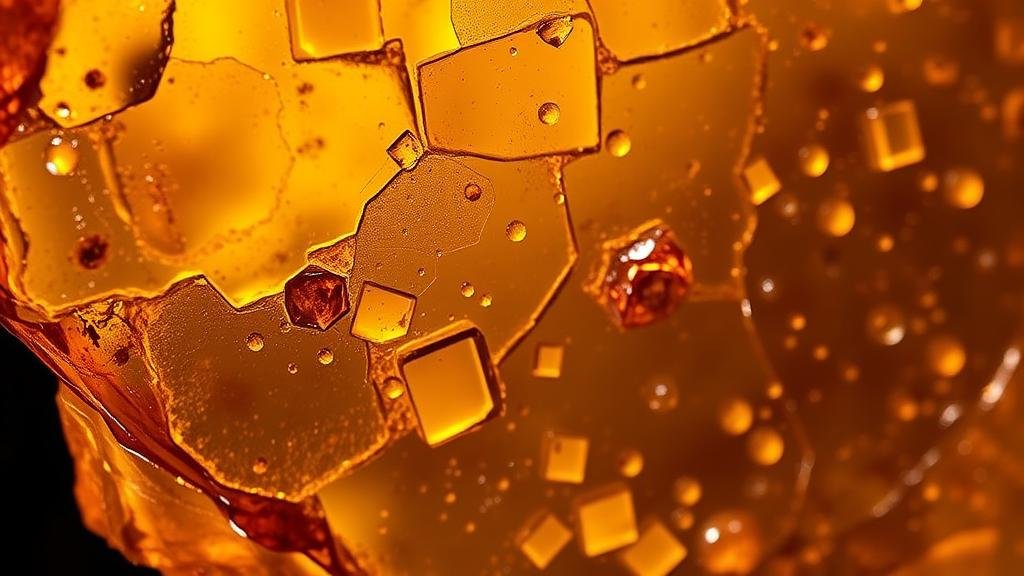Amber’s Eternal Light: Exploring Fossilized Resin for Prehistoric Insights
Amber’s Eternal Light: Exploring Fossilized Resin for Prehistoric Insights
Amber, often referred to as natures time capsule, is a fascinating fossilized resin that offers invaluable insights into prehistoric ecosystems. Rockhounds and mineral collectors alike are drawn to amber not only for its beauty but also for its unique ability to encapsulate ancient life forms. This article delves into the formation, identification, and significance of amber, while providing collectors with practical tips on acquiring and caring for these remarkable specimens.
The Formation of Amber
Amber originates from the sap of ancient trees, primarily coniferous species, that lived millions of years ago. When these trees produced resin as a defense mechanism against injury or disease, the resin would eventually harden and fossilize. Fluctuations in temperature, pressure, and environmental conditions facilitated this transformation over geological timeframes.
Scientific studies indicate that amber can date back to as early as 320 million years ago, with significant deposits found from the Cretaceous period to the Miocene epoch. Through radiometric dating, scientists estimate that some of the best-preserved amber, such as Baltic amber, is approximately 44 million years old.
Types and Characteristics of Amber
Amber comes in various types, each with distinct characteristics influenced by its source and age. most common types include:
- Baltic Amber: This is the most well-known form, found primarily in the Baltic Sea region. It typically exhibits a yellow to orange hue and often contains inclusions of ancient insects and plant material.
- Dominican Amber: Known for its clarity and vibrant colors, Dominican amber often features inclusions of unique tropical organisms, making it highly sought after by collectors.
- Burma Amber: Originating from Southeast Asia, this amber can be a deep red or brown color and is relatively rare on the market.
Collectors should be aware that amber can also be synthetically produced. Genuine amber will feel warm to the touch and has a specific gravity between 1.05 and 1.1, while plastic imitations are usually much lighter.
Inclusions: The Prehistoric Treasure Trove
One of the most captivating aspects of amber is its ability to preserve ancient life forms as inclusions. e inclusions range from tiny insects to larger plant fragments, providing a window into the ecosystems of the past. Notable examples of inclusions include:
- Insects: Mosquitoes, ants, and even spiders have been found in amber, some of which exhibit colors and patterns that have remained unchanged for millions of years.
- Plant Material: Pollen, leaves, and flower parts trapped in amber provide crucial insights into prehistoric flora, aiding in the reconstruction of ancient climates.
- Animal Remains: In rare cases, small vertebrates have also been documented in amber, offering a unique glimpse into the evolutionary history of animals.
Research has shown that these inclusions can help scientists understand biodiversity and ecological relationships in ancient environments. For example, a study published in the journal Current Biology revealed that certain insects found in Dominican amber were closely related to modern species, highlighting the evolutionary continuity over millions of years.
Practical Tips for Collectors
For rockhounds and mineral collectors interested in acquiring amber, here are several practical tips:
- Choose Reputable Sources: Always purchase amber from trusted dealers or collectors who can verify its authenticity. Look for certifications or provenance that prove its origin.
- Examine for Inclusions: When possible, inspect pieces under magnification to search for inclusions. This not only enhances the aesthetic value but also adds scientific significance to the specimen.
- Caring for Your Amber: Store amber in a cool, dry place away from direct sunlight to prevent fading and damage. Clean it gently with a soft cloth; avoid harsh chemicals that can harm its surface.
Conclusion: The Everlasting Allure of Amber
Amber remains an enduring symbol of beauty and scientific intrigue, offering rockhounds and mineral collectors a direct connection to prehistoric life. By understanding its formation, diversity, and significance, collectors can appreciate amber not only as a collectible but as a scientific artifact that bridges millions of years of history. By following prudent acquisition and care strategies, enthusiasts can enjoy their amber specimens for generations to come.
In summary, whether you are an experienced collector or a newcomer to the world of geological wonders, amber holds a special allure that enhances our understanding of the past while allowing us to cherish its timeless beauty.



